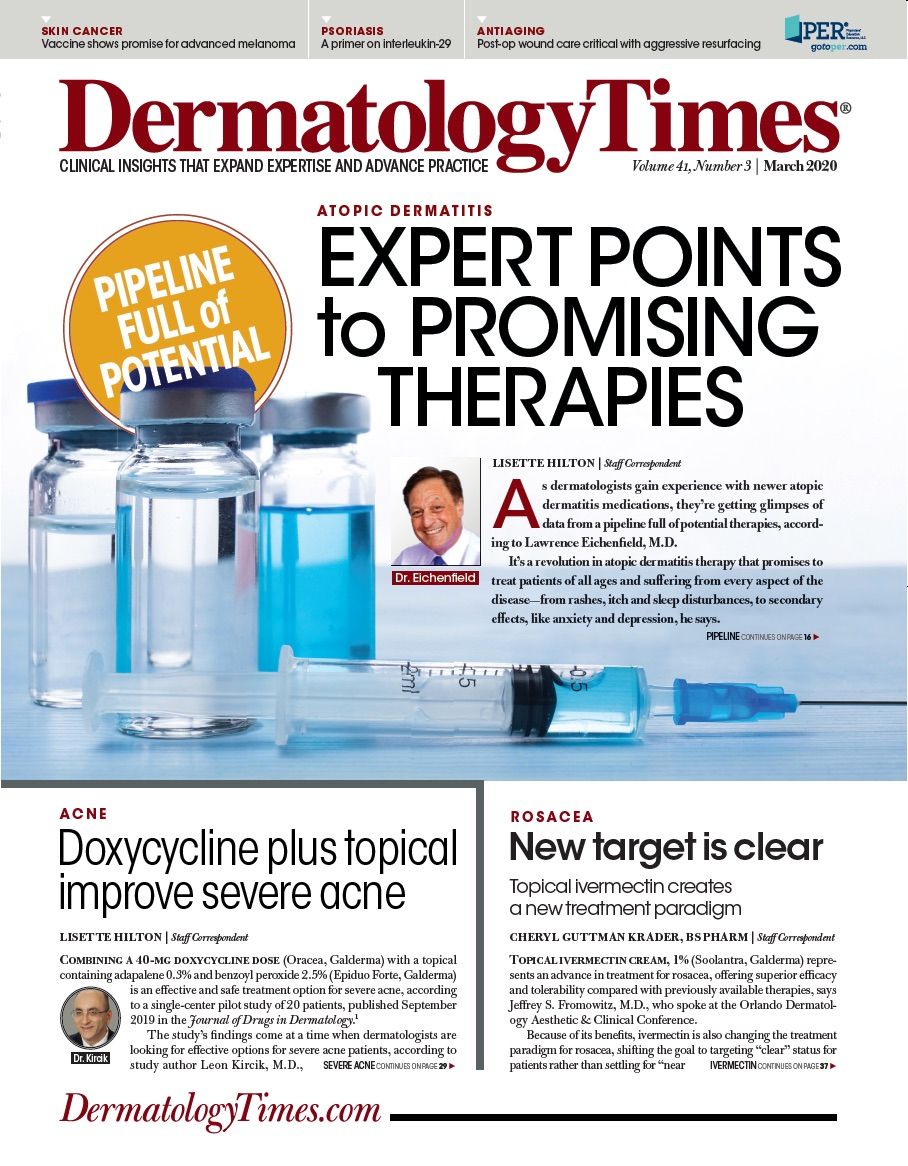- Case-Based Roundtable
- General Dermatology
- Eczema
- Chronic Hand Eczema
- Alopecia
- Aesthetics
- Vitiligo
- COVID-19
- Actinic Keratosis
- Precision Medicine and Biologics
- Rare Disease
- Wound Care
- Rosacea
- Psoriasis
- Psoriatic Arthritis
- Atopic Dermatitis
- Melasma
- NP and PA
- Skin Cancer
- Hidradenitis Suppurativa
- Drug Watch
- Pigmentary Disorders
- Acne
- Pediatric Dermatology
- Practice Management
- Prurigo Nodularis
- Buy-and-Bill
Publication
Article
Dermatology Times
US patients participating in risky skin lightening practices
Author(s):
Unscrupulous skin lightening practices are becoming a problem in the United States, according to dermatologist Arianne Shadi Kourosh, M.D., MPH.
Dr. Kourosh

Unscrupulous skin lightening practices are becoming a problem in the United States, according to dermatologist Arianne Shadi Kourosh, M.D., MPH. She says she has seen more patients using skin lightening creams that have unsafe and unregulated ingredients that patients purchase over the counter or overseas.
RELATED: How to diagnose rosacea in skin of color patients
“Unless these patients bring these creams to their dermatologists’ practices, we don’t necessarily know that they’re using creams with ingredients that we don’t recommend putting on the face,” says Dr. Kourosh, director, Pigmentary Disorder and Multiethnic Skin Clinic, Massachusetts General Hospital.
The problem became more evident in 2018 when a male patient presented with the desire to lighten his skin for cultural reasons and had been getting intravenous (IV) glutathione infusions at a U.S. skin lightening clinic. Glutathione infusions have questionable skin lightening efficacy and are considered unsafe, she says.
“IV glutathione infusions can damage the thyroid, kidney as well as cause life-threatening drug reactions, such as Stevens-Johnson syndrome,” Dr. Kourosh says.
She convinced the patient to stop the infusions. However, she found skin lightening clinics touting questionable and medically unsound treatments increasing in prevalence in the United States. In one case, FDA alleged Flawless Beauty, LLC, marketed unapproved, mis-labeled and dangerous drugs, singling out the company’s injectable skin whitening products. In 2017, a federal judge ordered the company to stop selling and recall the skin whitening products and other beauty products, according to a September 27, 2017 article on UPI.com.1 She also discovered a billboard for a skin lightening center in Boston, in a predominately African American community.
“It’s a concern that has racial and public health implications - to be targeting people who, for cultural reasons, want to lighten their skin - by advertising questionable, unsafe treatments,” Dr. Kourosh says. “We need to protect patients in vulnerable communities from this false propaganda. Dermatologists need to be aware that it’s happening in the United States.”
RELATED: Dermatologist closes gaps for patients with skin of color
Understanding cultural influences
Cultures worldwide, especially throughout Asia, place a premium on lighter skin, according to Dr. Kourosh, who also is director of Community Health at Massachusetts General Hospital and assistant professor of dermatology at Harvard Medical School.
Some of these patients present to dermatologists’ offices simply wanting to lighten their skin tone, while others have dermatological conditions, such as hyperpigmentation or melasma, according to Dr. Kourosh.
“I’ve had patients from India that come in with vitiligo. Some people in their regions think the white spots on their skin is leprosy. It could affect the ability of a young woman to be considered a good candidate for marriage,” she says.
Dermatologists need to determine the motivation and the potential cultural context in which a request for lightening treatment is occurring.
“Dermatologists have to be both astute in making the diagnosis but also culturally sensitive to make sure we’re treating a disease and not in some way contributing to these pressures that people already have,” she says.
RELATED: Atopic dermatitis in teens with skin of color
“One of the things that I have to educate patients about is the darker skin tone is not a dermatologic problem that needs to be treated. There is beauty in all skin types,” she says. “As dermatologists, we’ve already been working toward this, and hopefully we’ll find greater success in working with the media to demonstrate that all skin types are beautiful. The goal is to help neutralize some of these unhealthy cultural pressures that exist in some communities throughout the world,” she says.
She’ll treat patients if they have an actual skin disorder, such as vitiligo or hyperpigmentation from melasma. The gold standard for treating hyperpigmentation is a triple therapy with hydroquinone, a retinoid and a topical steroid. For patients that don’t want to use a product with hydroquinone, Dr. Kourosh recommends non-hydroquinone therapies, including Kojic acid, arbutin and several other preparations.
“Kojic acid and arbutin also inhibit the tyrosinase enzyme and work in a similar fashion to hydroquinone,” she says. “There are other agents that inhibit the protease-activated receptor 2 (PAR 2) enzyme, which can be helpful as well. Then, there also are combinations of chemical peels, laser therapy and topical therapies to help hyperpigmentation.”
For vitiligo, the gold standard of therapy would be a combination of topical steroids and phototherapy, according to Dr. Kourosh. There are also newer topical and systemic therapies that have been coming out; however, these are relatively new and we need to continue to monitor the results of future studies before they become widely recommended.
Non-Hispanic whites made up 62.6% of the U.S. population in 2013 but will likely be a minority population at about 42.6% by 2060, according to the U.S. Census Bureau projections.2 In the meantime, black, Asian and Hispanic populations are expected to grow in the next 40 years.
RELATED: Considerations for psoriasis patients with skin of color
The point, according to Dr. Kourosh, is that darker skin type populations are a growing force in the United States. Cultural competence is going to be a necessary field for every dermatologist, not just those who specialize in skin of color, she says.
References:
1. Wallace A. UPI. https://www.upi.com/Health_News/2017/09/27/Judge-orders-Flawless-Beauty-to-stop-selling-unapproveddrugs/ 9961506525174/. Published September 27, 2017. Accessed December 2019.
2. U.S. Population Trends. United States Census Bureau. https://www.ncsl.org/Portals/1/Documents/nalfo/USDemographics.pdf. Published October 15, 2015. Accessed December 2019.






